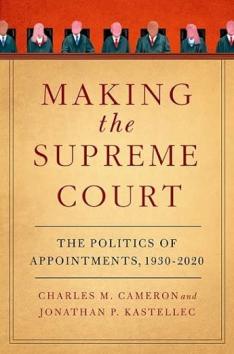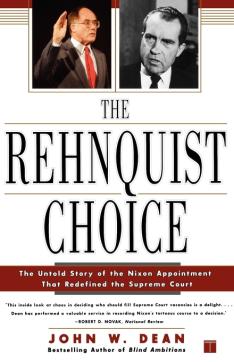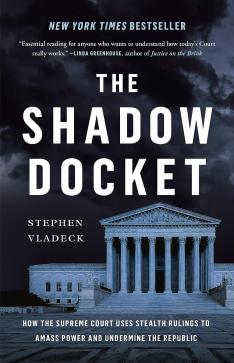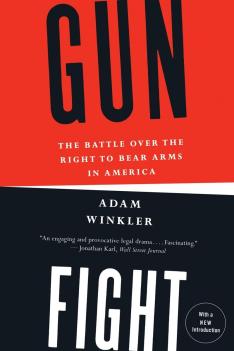
Photos courtesy of Jonathan Kastellec, left, and Charles Cameron
Charles Cameron is jointly appointed in the Department of Politics and the Princeton School of Public and International Affairs. He specializes in the analysis of political institutions, particularly courts and law, the American presidency, and legislatures. Jonathan Kastellec is a professor in the Department of Politics. His research and teaching interests are in American political institutions, with a particular focus on judicial politics and the politics of Supreme Court nominations and confirmations.
Cameron and Kastellec recently published Making the Supreme Court: The Politics of Appointments, 1930-2020, the product of a decade-long investigation into almost every aspect of nomination politics.
PAW asked Cameron and Kastellec to recommend three books to help people understand the politics of Supreme Court nominations, and what they mean for the current court. They suggested these:
The Rehnquist Choice: The Untold Story of the Nixon Appointment That Redefined the Supreme Court
By John Dean
Countless “behind-the-scenes” books recount the story of how presidents selected a particular Supreme Court nominee. The Rehnquist Choice stands out because it features a candid first-person account by a central player, plus amazing, surreptitious tape recordings of pivotal meetings in the Oval Office. In effect, “you are there.” The key player is none other than John Dean (the same John Dean of Watergate notoriety), the president is Richard M. Nixon, and the nominee is William Rehnquist. The Rehnquist choice was particularly consequential, as the jurist would go on to become chief justice in 1986 and would lead the court on a steadily more conservative path until his death in 2005, some three decades after his appointment.
Vivid moments stand out. For example, in one conversation with Attorney General John Mitchell, Nixon floats the idea of nominating the first female justice, saying “that would be a hell of a thing if we could do it.” And you can listen in and hear why Nixon went a different direction. But beyond these revelations, The Rehnquist Choice captures a turning point in the creation of a new method for selecting justices. Dean’s White-House-centered approach ultimately led to a meticulous, highly professionalized, and scrupulous selection procedure, one explicitly linked to ideological litmus tests and presidential ambitions for Supreme Court decisions. For better or worse, that is the world we now live in and The Rehnquist Choice shows its roots in the Nixon White House.
By Stephen Vladeck
The Supreme Court receives the greatest attention for the major cases it decides after hearing oral arguments and writing full opinions. But an unappreciated power of the Court is its almost complete discretion over which cases to decide in this “full” manner, and which in a low-key almost peremptory way, via injunctions, emergency orders, and stays. Today, only about 70 cases per term receive the full treatment while a great many receive the low-key treatment.
Shadow Docket, by Stephen Vladeck, a law professor at the University of Texas-Austin, examines these “under-the-radar” cases — its “shadow docket.” First, he shows that the conservative majority on the court has increasingly used decisions made through the shadow docket to advance legal policy goals. Previous courts rarely did so. More subtly, Vladeck masterfully traces the history of the court’s agenda-setting powers, showing that over time the court moved from an institution that was required statutorily to hear every case that was appealed to it, to one that is completely free and largely unaccountable in its selection of disputes. This lack of accountability, particularly to Congress, substantially increases the scope and power of the court in American politics today.
Gun Fight: The Battle Over the Right to Bear Arms in America
By Adam Winkler
Where do the cases heard by the Court come from? How did they get there? Increasingly, highly motivated interest groups and activists — typically financed by wealthy individuals, firms, and foundations — work tirelessly to create disputes and bring them to the courts in a way that facilitates an opinion favoring the group’s goals. In essence, the interest groups and a majority on the court tacitly work together to change the law of the United States.
Perhaps no area displays this development more clearly than gun rights. In our third recommendation, Gun Fight, Adam Winkler, a law professor at UCLA, traces the history of gun rights in the United States, while detailing the long and winding legal path to D.C. v. Heller, the Supreme Court’s landmark 2008 ruling. The majority opinion (penned by gun enthusiast Antonin Scalia) found that the Second Amendment creates an individual right to possess a firearm. Winkler shows that, perhaps counter-intuitively, the National Rifle Association (NRA) was hesitant to bring this case to the court, fearing an adverse ruling. Instead, the case was advanced by a few “policy entrepreneurs” who found both a sympathetic litigant to challenge Washington D.C.’s strict ban on handgun possession, and a wealthy entrepreneur to bankroll the operation. After reading Gun Fight, you may find yourself wondering after a headline-making case: Who really drove this case forward, behind the scenes?





